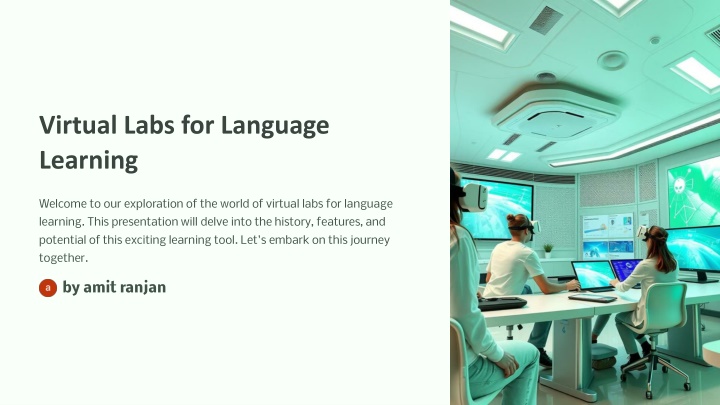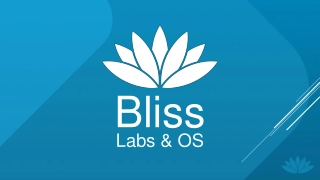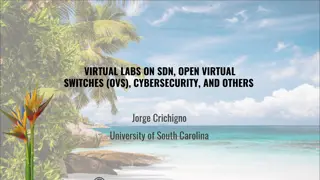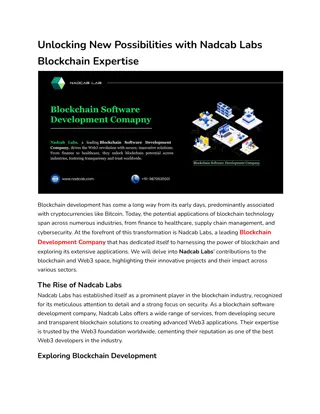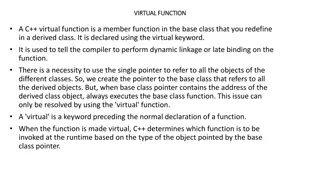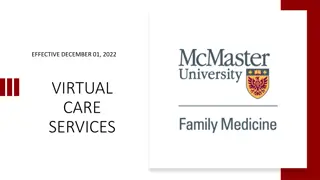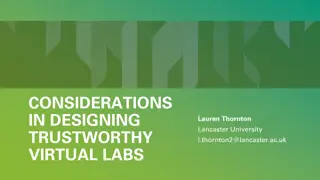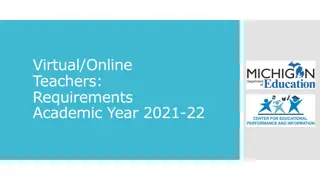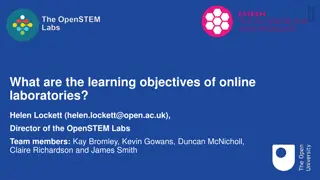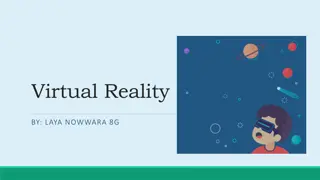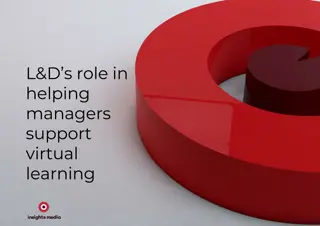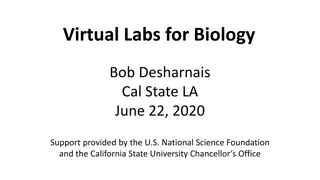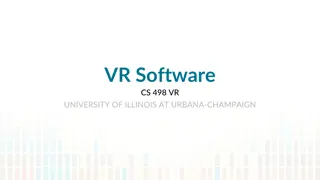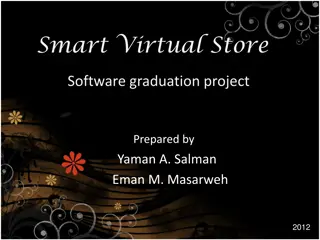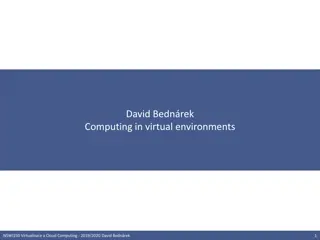Unveiling the World of Virtual Language Labs
Delve into the history, features, and advancements of virtual language labs, from early developments in the 1960s to the integration of AI and immersive technologies in the present day. Explore key features like interactive exercises, multimedia content, personalized learning, and collaboration opportunities.
Download Presentation

Please find below an Image/Link to download the presentation.
The content on the website is provided AS IS for your information and personal use only. It may not be sold, licensed, or shared on other websites without obtaining consent from the author.If you encounter any issues during the download, it is possible that the publisher has removed the file from their server.
You are allowed to download the files provided on this website for personal or commercial use, subject to the condition that they are used lawfully. All files are the property of their respective owners.
The content on the website is provided AS IS for your information and personal use only. It may not be sold, licensed, or shared on other websites without obtaining consent from the author.
E N D
Presentation Transcript
Virtual Labs for Language Learning Welcome to our exploration of the world of virtual labs for language learning. This presentation will delve into the history, features, and potential of this exciting learning tool. Let's embark on this journey together. by amit ranjan preencoded.png
Etymology of "Virtual" and "Laboratory" VIRTUAL Virtualis (Latin) excellence, potency, efficacy 14th Century Virtue Being something in essence or effect, though not actually or in fact 15th Century via sense of capable of producing a certain effect [Early 15th C] Computer sense of not physically existing but made to appear by software 1959. LABORATORY Laboratorium (Med. Latin) A place for labour or work (from laborare labor) Room or building set apart for scientific experiments 16th Century preencoded.png
History of Virtual Labs: Early Developments 1960s 1 Early language labs were mainly audio-based, with students listening to recorded lessons and practicing pronunciation. The earliest labs were mostly analog, with physical tape players. 1970s-1980s 2 The emergence of personal computers brought text-based language learning software and basic simulations. These early virtual labs were mostly text-based and focused on grammar and vocabulary. 1990s 3 The internet and multimedia technologies enabled more engaging virtual labs with interactive exercises, audio-visual content, and limited online communication features. preencoded.png
History of Virtual Labs: Advancements 2000s 1 Virtual labs became more sophisticated with interactive simulations, 3D environments, and online collaborative learning tools. 2010s 2 Virtual reality (VR) and augmented reality (AR) technologies started to integrate into language learning, offering immersive experiences. Present The development of advanced AI and machine learning algorithms enhances language learning in virtual labs, providing personalized feedback and adaptive learning paths. 3 preencoded.png
Key Features of Virtual Language Labs Interactive Exercises Multimedia Content Virtual labs offer a variety of They include audio and video interactive exercises, including recordings, animations, and grammar drills, vocabulary games, pronunciation practice, and interactive graphics to enhance engagement and make learning conversational simulations. more stimulating. Personalized Learning Collaboration and Communication Many virtual labs adapt to Virtual labs allow students to individual student needs and interact with each other and learning styles, offering personalized feedback and instructors in real-time through chat, voice calls, and virtual customized learning paths. classrooms. preencoded.png
Advantages of Virtual Language Labs Accessibility Cost-Effectiveness 1 2 Virtual labs can be accessed Virtual labs can be more anytime, anywhere, allowing affordable than traditional for flexibility and convenience language labs, reducing the need for physical infrastructure in language learning. and resources. Immersive Experiences Personalized Learning 3 4 AI-powered virtual labs provide Virtual labs use multimedia and personalized feedback, adapt VR technologies to create to individual learning styles, and offer tailored learning immersive environments that enhance engagement and paths. accelerate learning. preencoded.png
Examples of Modern Virtual Language Labs Google Classroom Duolingo A platform for educators to create virtual classrooms and assign interactive language learning tasks. A popular language learning app that uses gamification and AI to create interactive exercises and personalized learning experiences. Memrise Babbel A language learning app that uses flashcards, spaced repetition, and interactive games to reinforce vocabulary and grammar. A language learning app that offers interactive lessons, pronunciation practice, and conversational skills development. preencoded.png
Open-Source Virtual Language Lab Platforms Open Source 1 Open-source platforms are freely available for modification and distribution. Community-Driven 2 Developed and maintained by a community of contributors, fostering collaboration and innovation. Customization 3 Allows educators to tailor labs to specific language learning needs and teaching methodologies. Cost-Effective 4 Open-source platforms can significantly reduce development and implementation costs. Examples 5 Moodle, Canvas, and Mahara offer customizable features for creating virtual language labs. preencoded.png
Limitations and Challenges of Virtual Labs 1 2 Digital Divide Lack of Personal Interaction Unequal access to technology and Virtual labs may lack the richness of internet connectivity can limit face-to-face interaction, which can be participation in virtual language labs. crucial for language development. 3 4 Technical Difficulties Cybersecurity Concerns Technical issues and glitches can disrupt Online platforms require robust learning and frustrate both students and cybersecurity measures to protect educators. student data and ensure a safe learning environment. preencoded.png
Resources for Virtual Language Lab Exploration Language Virtual www.languagevirtual.org Open Culture https://www.openculture.com Tandem https://tandem.net Word Reference https://www.wordreference.com/ Libre Lingo https://librelingo.app/ preencoded.png
Google Classroom: Collaborative Learning and Assignments Key Features Language Learning Focus Integrated with Google Suite for seamless document sharing and collaboration. Easy assignment creation and grading. Effective communication tools for teachers and students. Supports language learning through collaborative projects, discussions, and assignments. Facilitates peer feedback and language practice. preencoded.png
Duolingo: Gamified Language Practice Gamified Learning Adaptive Learning Uses game mechanics like points, levels, and streaks to motivate learners and make language learning engaging. Adjusts the difficulty level based on user performance, providing personalized learning experiences. Multiple Language Options Offers a wide range of languages to learn, catering to diverse language learning goals. preencoded.png
Memrise: Spaced Repetition and Adaptive Learning Spaced Repetition Adaptive Learning Re-introduces vocabulary and grammar concepts at strategic intervals to optimize retention. Personalizes the learning path based on user performance, tailoring exercises to individual strengths and weaknesses. Variety of Activities Includes various learning activities, such as flashcards, quizzes, and interactive games, to keep learners engaged. preencoded.png
Babbel: Conversation-Focused Lessons Conversation-Focused Prioritizes real-life conversations and practical language skills. Native Speaker Audio Features authentic audio from native speakers to improve pronunciation and listening comprehension. Interactive Exercises Includes interactive exercises to solidify grammar and vocabulary acquisition. preencoded.png
Moodle: Customizable Virtual Language Lab Customizable 1 Modular 2 Open Source 3 preencoded.png
Canvas: Interactive Lessons and Assessment Flexible 1 User-Friendly 2 Integrated 3 preencoded.png
Mahara: ePortfolios for Language Learners 1 2 Showcase Reflection Language skills and achievements. On learning journey and progress. 3 Goal Setting For future language learning. preencoded.png
Trends and the Future of Language Learning Technology Emerging technologies like AR, VR, and AI are revolutionizing language learning, offering more immersive, personalized, and engaging experiences. The future of language learning will likely involve more personalized learning paths, AI-powered tutors, and immersive virtual environments that make learning more accessible and enjoyable. preencoded.png
